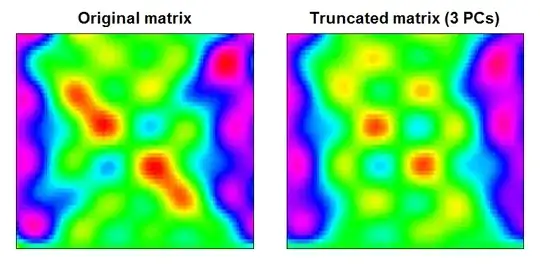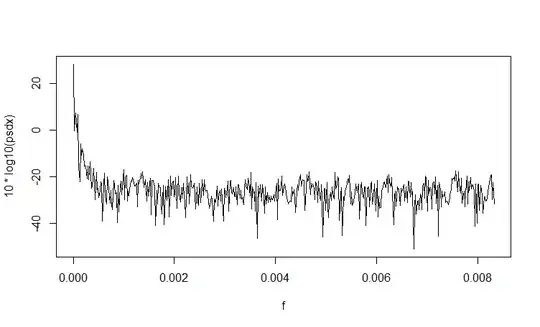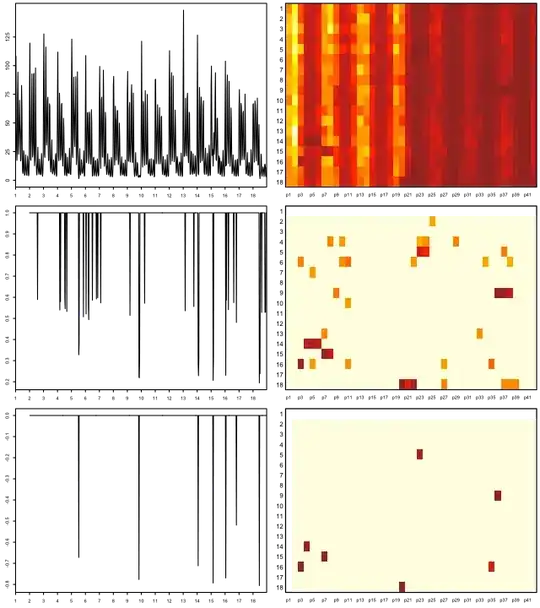I need to identify seasonality/ periodicity of a dataset so as to develop an ARMAX model. This is what the original time-series looks like

I have plotted the periodogram of the dataset.
Ps: I used the first difference of the original time series so as to remove the trend from the original time series . This what the periodogram looks like
I also removed the linear trend from the data and estimated the periodogram. Below is what it looks like
I also estimated periodogram of the raw data set without any differencing. Clearly, it shows there is some trend in the data. I am using following R-code to generate it
A <- read.xlsx("Interpolation_Data.xlsx")
y <- A[,2]
x <- as.numeric(A[,4])
diff.y <- diff(y)
diff.x <- diff(x)
Fs<- 1/60
n=length(diff.y)
xdft <-fft(diff.y)
xdft <- xdft[1:(n/2+1)]
psdx <- (1/(Fs*n))* abs(xdft)^2
psdx[c(-1,-n)] <- 2*psdx[c(-1,-n)]
f <- seq(0,Fs/2,by = Fs/n)
plot(f,10*log10(psdx),type='l')


